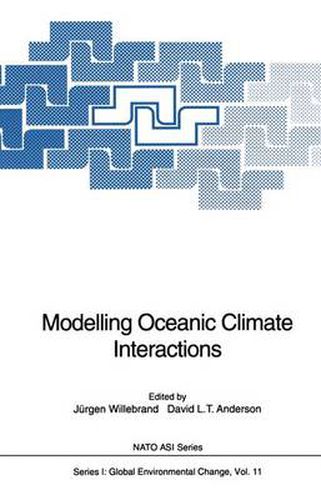Readings Newsletter
Become a Readings Member to make your shopping experience even easier.
Sign in or sign up for free!
You’re not far away from qualifying for FREE standard shipping within Australia
You’ve qualified for FREE standard shipping within Australia
The cart is loading…






This title is printed to order. This book may have been self-published. If so, we cannot guarantee the quality of the content. In the main most books will have gone through the editing process however some may not. We therefore suggest that you be aware of this before ordering this book. If in doubt check either the author or publisher’s details as we are unable to accept any returns unless they are faulty. Please contact us if you have any questions.
The ocean plays a central role in determining the climate of the earth. The oceanic circulation largely controls the temporal evolution of cli mate changes resulting from human activities such as the increase of greenhouse gases in the atmosphere, and also affects the magnitude and regional distribution of those changes. On interannual and longer time scales the ocean is, through its interaction with the atmosphere, a source of important natural climate variations which we are only now beginning to recognise but whose cause has yet to be properly determined. Chem ical and biological processes in the ocean are linked to climate change, particularly through interaction with the global carbon cycle. A quantitative understanding of the oceanic role in the climate system requires models which include many complex processes and interactions, and which are systematically verified with observations. This is the ob jective of global research programs such as TOGA, WOCE, and JGOFS. Coupled numerical models of the oceanic and atmospheric circulation constitute the basis of every climate simulation. Increasingly it is recog nized that in addition a biological/chemical component is necessary to capture the pathways of carbon and other trace gases. The development of such coupled models is a challenging task which needs scientists who must be cognizant of several other disciplines beyond their own specialty.
$9.00 standard shipping within Australia
FREE standard shipping within Australia for orders over $100.00
Express & International shipping calculated at checkout
This title is printed to order. This book may have been self-published. If so, we cannot guarantee the quality of the content. In the main most books will have gone through the editing process however some may not. We therefore suggest that you be aware of this before ordering this book. If in doubt check either the author or publisher’s details as we are unable to accept any returns unless they are faulty. Please contact us if you have any questions.
The ocean plays a central role in determining the climate of the earth. The oceanic circulation largely controls the temporal evolution of cli mate changes resulting from human activities such as the increase of greenhouse gases in the atmosphere, and also affects the magnitude and regional distribution of those changes. On interannual and longer time scales the ocean is, through its interaction with the atmosphere, a source of important natural climate variations which we are only now beginning to recognise but whose cause has yet to be properly determined. Chem ical and biological processes in the ocean are linked to climate change, particularly through interaction with the global carbon cycle. A quantitative understanding of the oceanic role in the climate system requires models which include many complex processes and interactions, and which are systematically verified with observations. This is the ob jective of global research programs such as TOGA, WOCE, and JGOFS. Coupled numerical models of the oceanic and atmospheric circulation constitute the basis of every climate simulation. Increasingly it is recog nized that in addition a biological/chemical component is necessary to capture the pathways of carbon and other trace gases. The development of such coupled models is a challenging task which needs scientists who must be cognizant of several other disciplines beyond their own specialty.